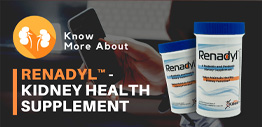Kibow Biotics is Preferred and Superior to Yogurt for Uremia Applications
R Dheer, BS1, T Chordia, MB1, B Pechenyak1, J Marczely, BS1, B Patel, PhD1, P Ranganathan, MS MT ASCP1, N Ranganathan, PhD1 and E A Friedman, MD2.
1Kibow Biotech Inc, Phila, PA, United States and 2Dept. of Med., Downstate Medical Center, Brooklyn, NY, United States
Journal of the American Society of Nephrology 15: Oct 2004 pp. 769A PUB038
Nitrogenous wastes that accumulate in uremia flow into the gut by passive diffusion from plasma. To continue a line of investigation focused on exploration of the hypothesis that selected bacteria instilled in the lower GI tract might convert elevated levels of nitrogenous wastes in renal insufficiency into nontoxic compounds we tested several brands of yogurts containing a mixture of probiotic bacteria and compared their in vitro catabolic characteristics to our proprietary microbial product formulation termed Kibow Biotics. Of ten yogurt brands tested, two brands demonstrated urea utilization characteristics in synthetic intestinal fluid fortified with urea (230mg/dL) over 18hrs equivalent to Kibowbiotics.
Identical studies comparing these yogurts of with kibowbiotics proprietary containing L. acidophilus KB20, B. longum KB71 and S. thermophilus KB06 (total 5 x 109 CFU/gm) demonstrated increased urea utilization characteristics (300mg/dL) over the test period of 18 hrs. However, when the two commercial yogurts and kibowbiotics were subjected to a simulated gastric environment (pH 3.0, 2hrs), followed by exposed to synthetic bile (0.3% bile pH 6.0, 3hrs) both brands of yogurts lost almost 90% of their potential for urea utilization (loss of microbial viability) in synthetic intestinal fluid fortified with urea (reflecting an hydrolysis of approx. 27mg/dL) over 18 hrs. Under identical conditions and exposure to gastric and bile, kibowbiotics retained the capacity to cause hydrolysis of over 90% urea (300mg/dL) in less than 18 hrs. We infer that the probiotic combination in Kibowbiotics contains urea hydrolyzing capacity in vitro beyond that of available yogurt brands and may have application as a treatment for nitrogenous waste reduction in uremia.


